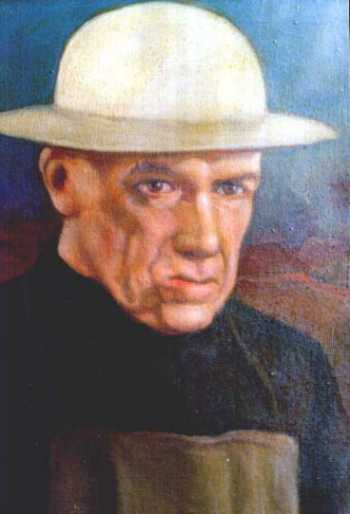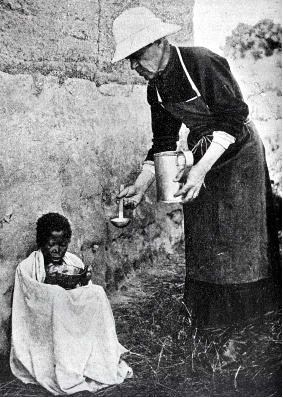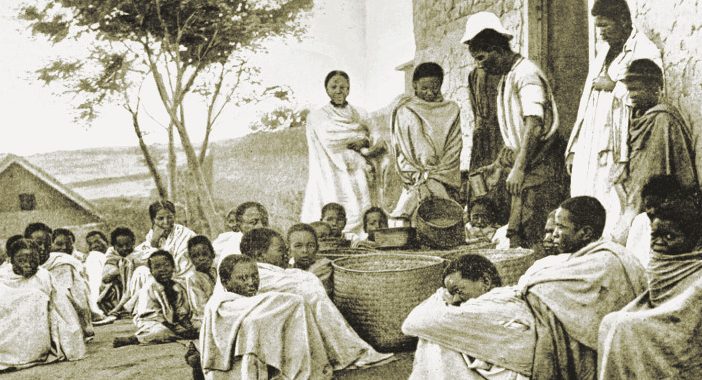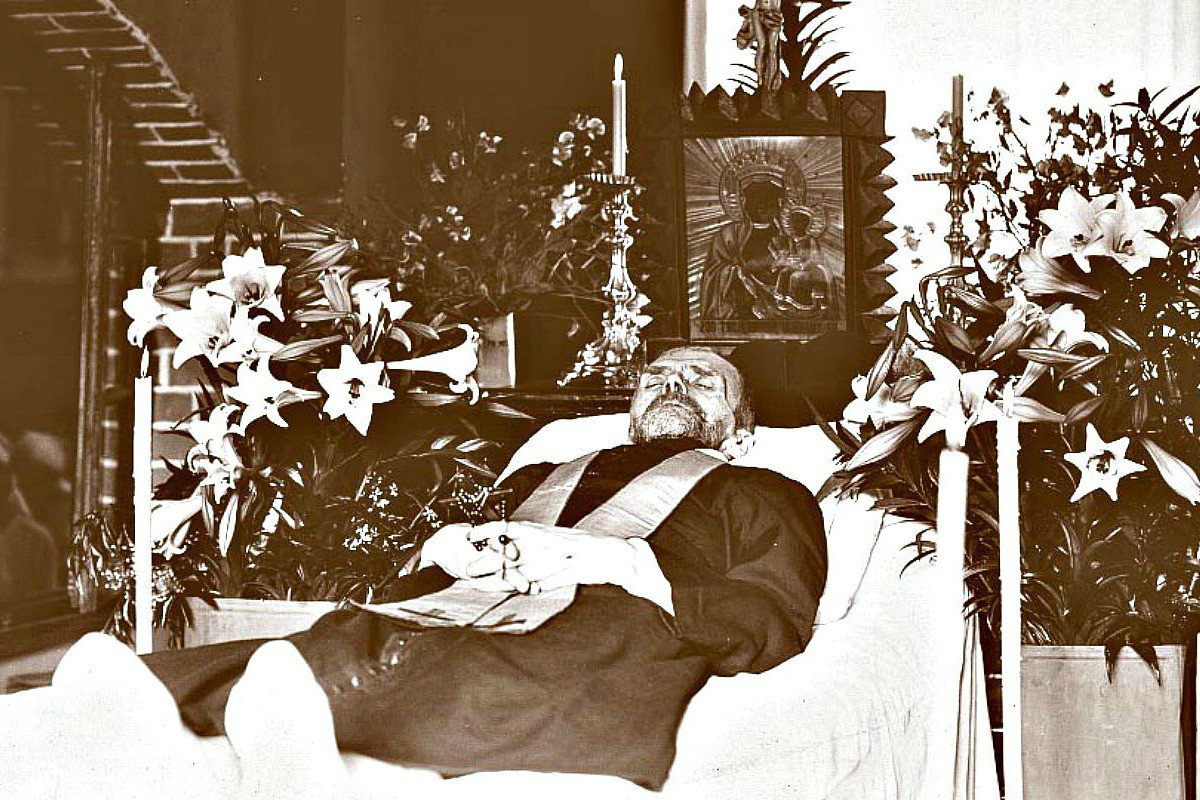Blessed Jan Beyzym, SJ
Born: May 15, 1850
Died: Oct 2, 1912
Beatified : Dec 21, 1992
 Jan Beyzym, known in Madagascar as the Servant of Lepers, was a true pioneer in caring for lepers during the time when leprosy was incurable and those afflicted with leprosy were banished from society. He was born in the family estate in Poland’s Volinia region and was the eldest of five children. He received his early education at home but when the family lost its estates in the 1863 uprising and were forced to separate, Jan’s mother took the children to live with her sister in the Podole region while Jan’s father crossed into Austrian held Galicia in order to flee from the Cossacks who were pursuing him.
Jan Beyzym, known in Madagascar as the Servant of Lepers, was a true pioneer in caring for lepers during the time when leprosy was incurable and those afflicted with leprosy were banished from society. He was born in the family estate in Poland’s Volinia region and was the eldest of five children. He received his early education at home but when the family lost its estates in the 1863 uprising and were forced to separate, Jan’s mother took the children to live with her sister in the Podole region while Jan’s father crossed into Austrian held Galicia in order to flee from the Cossacks who were pursuing him.
Jan decided to become a diocesan priest after completing his secondary studies but while visiting his father whom he had not seen for eight years, his father suggested that he consider the Jesuits instead. So on December 19, 1872, father and son traveled to the Jesuit novitiate at Stara Wies in Galicia and he was accepted as a novice.
During his noviceship a cholera epidemic broke out. Jan and the other novices were permitted to accompany the priests and brothers as they visited those afflicted with cholera. He was ordained in 1881 after completing his philosophy and theology in Krakow and was assigned to teach French and Russian in schools in Tarnopol and later at Chyrow, where he was also in charge of its infirmary.
Fr Beyzym desired to work among the lepers and as early as 1879 had made his desire known to his superiors. But it was only in 1898 when Fr Beyzym was 40-years old that his long desire was granted. Fr Beyzym, who spoke no English, was sent to Madagascar instead of India, because he could speak French and could assist the French Jesuits there working with lepers.
 Fr Beyzym was assigned to the Ambahivuraka leprosarium in the abandoned desert outskirts of Tananarive where one hundred and fifty lepers, men, women and children lived in extreme material and spiritual poverty, stricken by hunger and sickness with no access to even basic medical care. Many died as often from hunger as from the illness. The first radical thing Fr Beyzym did was to live with the lepers, something no one had done before. Putting his infirmary experience to work, he provided medical attention to their sores, improved their housing, prepared food and secured adequate water. When the government rice ration was insufficient, he went into the city and begged food and clothing for them. For their spiritual needs, he brought God to them as well as the sacraments.
Fr Beyzym was assigned to the Ambahivuraka leprosarium in the abandoned desert outskirts of Tananarive where one hundred and fifty lepers, men, women and children lived in extreme material and spiritual poverty, stricken by hunger and sickness with no access to even basic medical care. Many died as often from hunger as from the illness. The first radical thing Fr Beyzym did was to live with the lepers, something no one had done before. Putting his infirmary experience to work, he provided medical attention to their sores, improved their housing, prepared food and secured adequate water. When the government rice ration was insufficient, he went into the city and begged food and clothing for them. For their spiritual needs, he brought God to them as well as the sacraments.
Fr Beyzym soon realized that the lepers needed a real hospital and doctors and nurses but such a project required 150,000 francs and was too ambitious. He was undeterred and placed the project under the protection of Our Lady of Czestochowa and began soliciting funds from Catholic missionary organizations and magazines in Poland. His eloquent and effective letters moved many people that even those who had little to spare, donated what was needed to build a hospital. Fr Beyzym picked Marana because it had good water supply and the land was good for agriculture. Fr Beyzym designed the hospital for 200 patients, with separate buildings for men and women together with pharmacy, dispensary, living quarters for missionaries and religious sisters and a large chapel. He even found time to sculpt decorations for the chapel’s interior.
After several years working on the Marana project, Fr Beyzym received a most unexpected and pleasant surprise – the sick but ambulatory at Ambahivuraka had walked 180 miles, a month’s journey over mountains and through deep valleys – to Marana just to be with their beloved priest who had shown them so much love. The happy Fr Beyzym welcomed and embraced each one of them. When the hospital was nearing completion, Fr Beyzym heard of the distressing situation in which Polish deportees were living on the Russian island of Sakhalin, north of Japan and wanted to help these people who were his fellow countrymen. However he was unable to fulfill that desire as weakened by his prolonged labour and worn out by penances and an austere life, he contracted a fever which never left him. He died two months later, October 2, 1912, surrounded by those whom he loved. Both in his personal and in his apostolic labours, Fr Beyzym always kept in mind the goal that St Ignatius prescribed for the members of the Society – forthe greater glory of God, and the good of souls. Fr Beyzym wrote:” One’s country is where the greater service of God and help of the souls is found. It does not matter where you live: at the equator or the North Pole. What really matters is to die in the service of the Lord Jesus as a member of our holy Society. I beg this grace as much as for our dear Province as for myself.”

The hospital at Marana, named after Our Lady of Czestochowa was opened on August 16, 1916 and stands today as a lasting monument to Fr Beyzym’s selfless dedication and labour of love. It continues to be staffed by the Sisters of St Joseph of Cluny. The sick wear uniforms and are expected to observe the sanitary and moral rules of the hospital. They form a large family and also attend church services together.
Fr Beyzym spent the last fourteen years of his life as a good Samaritan caring for abandoned lepers in Madagascar and a decree acknowledging his extraordinary virtue was promulgated on December 21, 1992.

